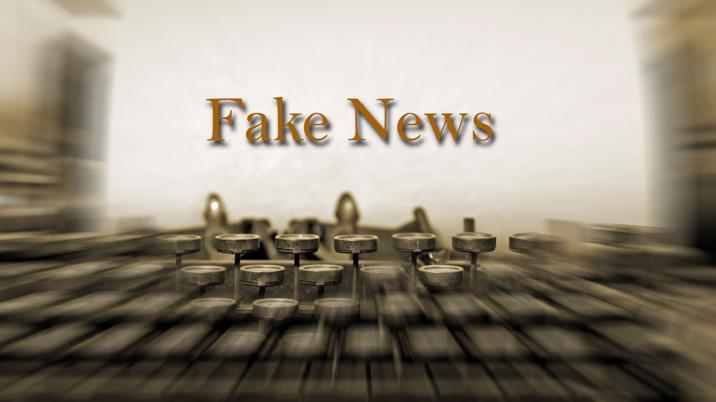
When we hear furious accusations hurled around about the ‘liberal elite’ or the ‘mainstream media’, who is it they are directing their anger at exactly? What do those terms mean? Are they talking about me? I’d certainly like to think so but perhaps that’s just my own vanity. I think I’m quite liberal and strangely getting more so with age. ‘London’ or ‘urban’ is sometimes added to the phrase and I qualify there too. But ‘elite’? That would be stretching the influence of a specialist trade magazine.
What about ‘mainstream media’? “You wish, Dad,” was the home truth offered to me from family when I implied so in casual conversation. A fair point, I think. Engineering & Technology magazine is quite broad and has a large circulation but still too specialist to be considered ‘mainstream’. That’s the BBC, the Guardian, the Telegraph, even the tabloids – and certainly ITV.
Eamonn Holmes seemed to imply otherwise when he responded to his show’s report about 5G and coronavirus conspiracy theories: “I totally agree with everything you are saying but what I don’t accept is mainstream media immediately slapping that down as not true when they don’t know it’s not true,” he said on air, “it’s very easy to say it is not true because it suits the state narrative. That’s all I would say, as someone with an inquiring mind.”
Our readers, the scientists and engineers with enquiring minds, know it’s not true. There is no evidence for it and there is no theory as to how mobile phone antennas could cause a pandemic or weaken anyone’s immunity. The conspiracy is not unbelievable because the government tells us so, but because the facts of the physical world make it so.
Holmes’s comments raised an interesting question for our news coverage. Should E&T cover them? Staff raised understandable concerns about fuelling fake news with the ‘oxygen of publicity’. On the other hand, the internet has changed everything from the days of the ‘green ink brigade’ as newspaper editors used to call its fringier elements of letter writers. Social media can fuel fake news all by itself. It doesn’t need mainstream media. It helps. But it won’t go away just because it’s ignored.
So, is it mainstream media’s job to challenge fake news like this? It seems sad that nonsense is allowed to set the news agenda. Our readers could instantly see it was nonsense – not because of any ‘bias’, because they know what they are talking about. The major broadcasters understandably avoided the 5G-coronavirus conspiracy at first; a few masts being smashed up was just a piece of vandalism for the wider national mainstream media. But it makes our specialist news when our readers rely on that technology for their work in driverless vehicles, smart cities, internet of things or the many other emerging technologies dependant on high speed, low latency network technology. Telecoms engineers were even being threatened.
The conspiracy is not unbelievable because the government tells us so, but because the facts of the physical world make it so.
Not for human consumption
Property being damaged is one thing, people getting hurt is another. Bleach manufacturers warning the public not to drink or inject their products following a president’s comments during a worldwide pandemic is not a story I ever expected to see in my lifetime. That was one fear with the US president’s speculation about the possibility of using disinfectant inside the body to treat coronavirus. He didn’t directly suggest that people try it, but I could understand why journalists might be wary about what how some fools might respond to his comments. Yet he’s the president of the US – what he says is of interest in itself because of who he is, no matter how wrong. So it needs reporting. Maybe not so much his supporter who appeared afterwards on R4’s World At One (we’re all listening to WATO now we’re locked down at home) claiming to have a research paper with her supporting Trump’s claims. WATO broadcast a ‘don’t try this at home’ sort of warning the next day.

There have always been those ‘clearing up’ clarifying stories and they’re not always the result of maliciously or deliberately spread untruths. One of our better performing stories online last year was about a giant, fire-dropping lion jumping over the stands at a sports stadium reopening. It was reported as a ‘hologram’ but E&T realised that didn’t seem likely – there is no hologram technique able to come anywhere near that scale yet. And so we were able to show it was a fun film effect. Somehow it had been spun or mistranslated as a hologram and E&T was pleased to clear it up.
It was a bit of fun with no harm done and our own traffic boosted. Generally, though, I would rather we were reporting something genuinely new rather than having to fact-check, rebut or deal with the fallout from patently false stories. It would be nice to get back to real news about real facts and not have to be investigating the real facts of the unreal news. It would help if the tech giants could be made accountable for what they publish in the same way publishers have always been. But that’s another column to come.
He’s the president of the US – what he says is of interest in itself because of who he is, no matter how wrong.
This article was first published in InPublishing magazine. If you would like to be added to the free mailing list, please register here.












